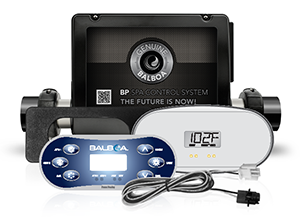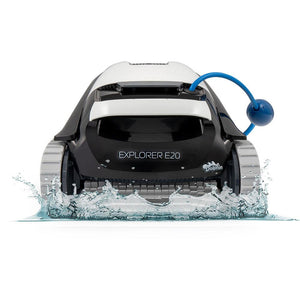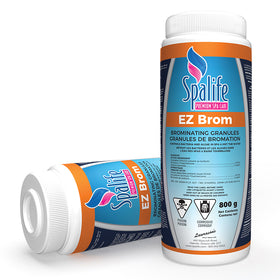Contact Us Free: (866) 316-9064
Monday - Friday
9AM - 5PM (PST)

The Importance of Hot Tub Chemicals
Stepping into a hot tub should be an escape, a moment of relief and relaxation from the stresses of the day. Yet, for many, this idyllic image is marred by the lurking concerns of water safety and maintenance.
Picture the disappointment of looking forward to a soothing soak, only to find the water murky and uninviting, or worse, skin and eye irritations post-dip due to imbalanced chemicals. This is the reality for countless hot tub owners who struggle with keeping their spa sanctuaries clean and safe. It's a challenge that demands attention, expertise, and the right resources.
This article gets into the heart of hot tub maintenance by highlighting the pivotal role of hot tub chemicals. Here, we're addressing those very concerns, guiding you through the maze of maintenance to ensure your hot tub remains a source of joy and relaxation, not stress and extra chores.
The Basics of Hot Tub Chemicals
Understanding the basics of hot tub chemicals is crucial for anyone aiming to keep their spa water clean, safe, and ready for relaxation. The right chemical balance in your hot tub ensures the water remains clear, free of harmful bacteria, and gentle on your skin and eyes.
Essentially, managing your hot tub's water chemistry involves using a variety of chemicals to maintain the water's pH, alkalinity, and sanitizer levels.
Sanitizers are the first line of defence against bacteria and germs. Chlorine and bromine are the most popular choices.
Maintaining the right pH level is also vital. The pH scale measures how acidic or basic the water is, ranging from 0 to 14. For hot tubs, you want to keep the pH level between 7.2 and 7.8. If the pH level strays outside this range, it can lead to cloudy water, scale build-up, or even damage to the hot tub itself.
Alkalinity acts as a pH buffer, preventing sudden pH changes. Maintaining proper total alkalinity is important for stabilizing the pH levels.
Why Chemicals are Critical for Hot Tub Health
The critical role of chemicals in hot tub health cannot be overstated. Without the correct balance of chemicals, hot tubs can quickly become breeding grounds for bacteria and other harmful organisms.
Bacteria love warm water. It provides the perfect environment for them to multiply rapidly. This is where sanitizers like chlorine and bromine come into play. They work to kill bacteria and other pathogens, ensuring the water is safe for soaking.
Without adequate levels of these sanitizers, users could be exposed to various health risks, including skin rashes, infections, and even more serious conditions caused by bacteria like Legionella. Legionella can lead to Legionnaires' disease, a severe form of pneumonia.
Furthermore, the correct chemical balance is crucial for the hot tub's physical health. Water with improper pH levels (too acidic or too alkaline) can damage the hot tub's components.
Acidic water can corrode metal parts, such as heaters and pumps, while alkaline water can lead to scale buildup that can clog filters and reduce the efficiency of the hot tub's heating system.
The concept of "shocking" the water, or adding a high dose of oxidizing chemicals, plays a vital role as well. This process breaks down organic contaminants like sweat, oils, and cosmetics that sanitizers alone might not fully address. It's an essential step in preventing cloudy water and ensuring the sanitizers can work more effectively.
Water Balance
Grasping the concept of water balance is like unlocking the secret to a consistently enjoyable hot tub experience. It's not just about keeping the water looking clear. It's about ensuring that every soak is safe, comfortable, and doesn't lead to unwanted maintenance issues down the line. Water balance involves three key players: pH levels, alkalinity, and hardness.
First up, let's talk pH. It's a term that might bring back memories of high school chemistry, but here it's all about comfort and protection.
The pH scale tells us how acidic or basic the water is. For hot tub water, hitting a sweet spot between 7.2 and 7.8 on the scale is crucial. Stray too far on either side, and you're looking at water that can irritate your skin and eyes, or even damage the hot tub components.
Next is alkalinity, which acts like a bodyguard for your pH level. It keeps it from swinging wildly with every addition of water or chemicals. Aim to keep your hot tub's total alkalinity between 80 and 120 parts per million to ensure your pH level remains stable.
Finally, there's hardness, which refers to the amount of calcium dissolved in the water. Too little calcium, and your hot tub's surfaces start to corrode. Too much, and you get scale buildup that can cloud the water and clog your filters.
The goal is to maintain calcium hardness levels in the range of 100 to 250 parts per million for vinyl hot tubs and slightly higher for those made of plaster.
Regular testing with a reliable chemical kit is the best way to keep an eye on these levels. These kits make it easy to check your water balance and adjust as needed, ensuring your hot tub is always a welcoming retreat.
Common Hot Tub Chemicals and Their Uses
Hot tubs are all about relaxation, but keeping the water clean and safe takes a bit of work. This is where hot tub chemicals come into play. Each type of chemical has a specific role in making your hot tub experience enjoyable.
Sanitizers are the superheroes of hot tub maintenance. They keep the water clean by killing bacteria and other pathogens. The most common sanitizers used include chlorine and bromine.
Chlorine is effective and fast-acting, which makes it a popular choice for many hot tub owners. Bromine, on the other hand, is gentler on the skin and eyes and remains stable at higher temperatures, which is ideal for hot tubs.
Shock treatments are like a reset button for your hot tub water. Over time, sanitizers can get overwhelmed by the number of contaminants in the water, such as body oils, cosmetics, and sweat. A shock treatment breaks these down, restoring the effectiveness of your sanitizer and keeping the water clear.
Algaecides are not typically used in hot tubs as frequently as in pools, but they can come in handy if you ever face an algae problem. These chemicals help prevent algae from taking hold in your hot tub to ensure the water stays clean and clear.
Clarifiers are used to tackle cloudy water. They work by clumping together tiny particles that the filter can then catch more easily. While not always necessary, they can be a quick fix for water that's lost its sparkle.
The Consequences of Neglect
Neglecting hot tub care can lead to several issues that spoil the joy of owning a hot tub. When the water chemistry is not maintained properly, it can become a breeding ground for bacteria and algae. This not only makes the hot tub unsanitary but can also cause skin irritations or infections for those using it.
Imagine looking forward to a relaxing soak only to find the water murky and foul-smelling. Or worse, emerging with itchy skin or a rash.
Moreover, the improper balance of chemicals can severely damage the hot tub itself. Acidic water can corrode the metal components, leading to leaks and malfunctions, while too much alkalinity can cause scale buildup, clogging filters, and reducing the efficiency of the heating system.
Such damage not only diminishes your hot tub experience but can also lead to costly repairs.
Consistent hot tub care, including regular monitoring and adjusting of water chemistry, is essential to prevent these problems. Without it, what's meant to be a source of relaxation can quickly turn into a source of stress and financial strain.
Maintenance Tips and Best Practices
Maintaining a hot tub ensures it remains a relaxing retreat. Regularly testing the water's pH, alkalinity, and sanitizer levels is key.
For those with a new hot tub, starting off with a solid understanding of water chemistry is crucial. Using high-quality hot tub supplies helps keep the water sparkling and safe for everyone.
It's also important to clean the hot tub's filter according to the manufacturer's recommendations. This can vary, but generally, filters need a rinse every few weeks and a deep clean every few months. Covering the hot tub when not in use prevents debris from entering which reduces the need for cleaning and chemical adjustments.
Lastly, draining and refilling the hot tub every 3 to 4 months refreshes the water and maintains a clean environment.
The Clear Choice for Your Hot Tub
We've now navigated through the essential steps to maintain the perfect balance for a safe and enjoyable hot tub experience. From understanding the basics to implementing best practices, the importance of these chemicals cannot be overstated.
Pool Store Canada stands at the forefront of providing not just high-quality hot tub chemicals, but a comprehensive range of products designed for the ultimate care of your oasis. Our fast shipping and expert advice ensure you can enjoy a pristine hot tub environment without the guesswork. Dive into our collection and discover how we can help you maintain the perfect hot tub paradise.



